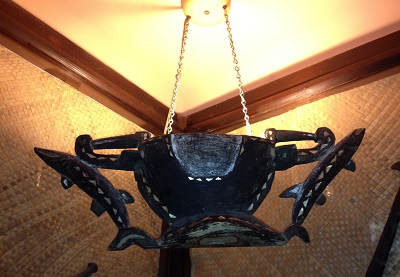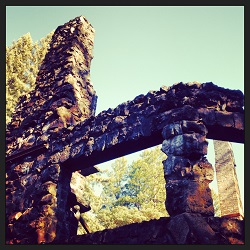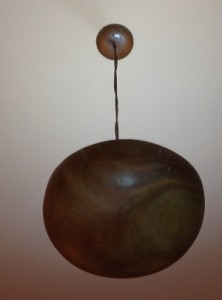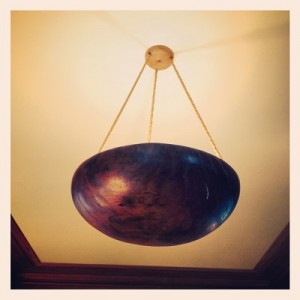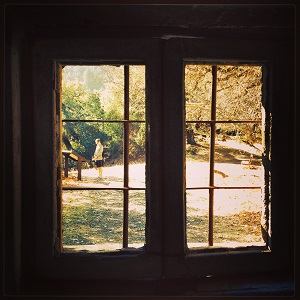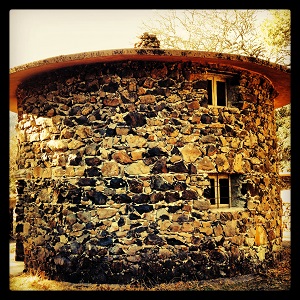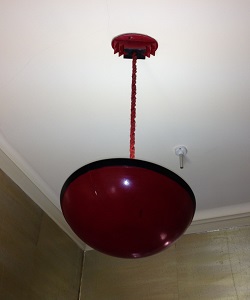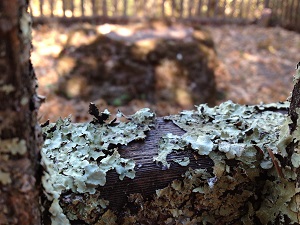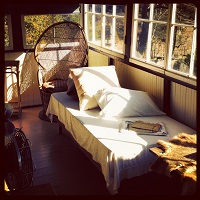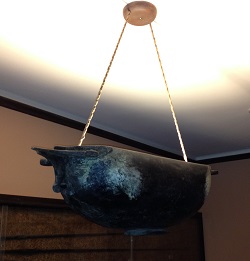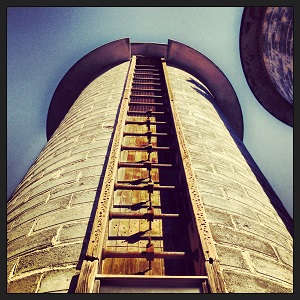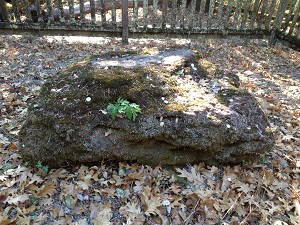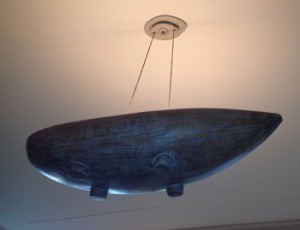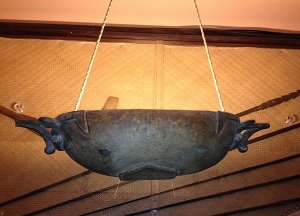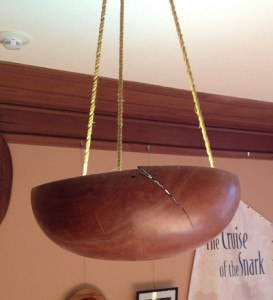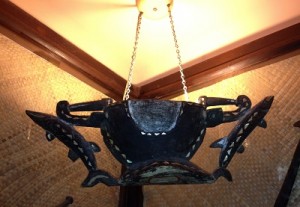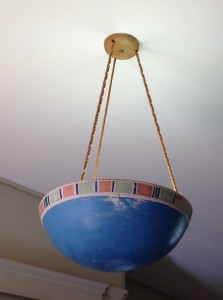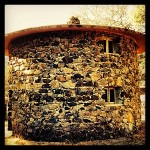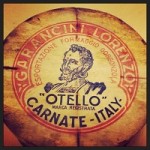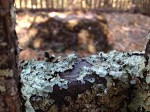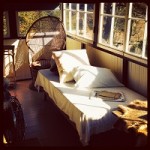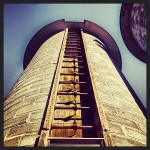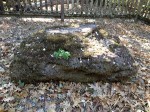I’m used to seeing common items re-purposed for a new use in more contemporary or eclectic homes and offices, but I was appreciatively stunned to see Polynesian food bowls turned into hanging lamps at the The House of Happy Walls museum at the Jack London State Park in Glen Ellen. As opposed to sticking out like the proverbially “sore thumb” these indirect lighting ceiling lamps complimented the Arts and Crafts inspired interior of the home built by Jack London’s widow, Charmian London, after his death.
Polynesian food bowl ceiling lamps
Charmian incorporated many items collected on a trip that she and Jack took to the South Seas islands (Polynesia) according to a museum docent. The large wooden bowls and carved sailing vessels used to serve traditional Polynesian island foods had been fitted with a hanging system and were connected to a central hub on the ceiling. Natural rope (hemp?), 3/8″ in diameter and approximately 18″ in length is fastened between the bowl or boat and the electrical hub above. The twine rope is evocative of boat rigging and lines the sort of which the London’s undertook in 1906-07 on the sailing ship the Snark.
Electrical wires hidden within the rope
As far as I could tell, the electrical wiring was hidden in the center of two legs of the rope to complete the electrical connection to the light fixtures. Some of the serving bowls turned light fixture were alternative hung with thin links of metal chain. The woven rope imparts another nautical type theme to the house that is a mixture of arts and crafts architectural detail and Polynesian appointments incorporated into balustrades and hallway wallpaper of woven reed mats. It’s all very charming and a little clever. (Click on thumbnails to enlarge photo)
Indirect boat lighting
With the incandescent clear bulbs of the early 19th century the lighting environment would have looked very different from the fluorescent bulbs now hidden within the food bowls or boats. The food bowl lamps are easy to miss as they blend in very nicely and would only arouse comment from a true interior design aficionado wanting to know the provenance of such unique lamps. The boats turned ceiling lamps would draw considerably more interest if people would only look up.
Clay serving bowls also used as ceiling lamps
On the second floor of the Happy Walls great room there were two clay serving bowls that had been turned into ceiling lamps with the same rope hanging system. Did Charmian run out of carved wooden bowls? On a tour of the original cottage that Charmian and Jack shared while the Wolf house was being built and where he ultimately died, there are similar ceiling food bowls and a Polynesian boat lamp in the dining hall. Were these lamps perhaps a whimsical addition to the older building that Charmian liked and continued in the new home of The House of Happy Walls she built after Jack died? Such information may be lost to history.
Early unconventional interior design
It certainly would be interesting to read about the thought process Charmian undertook that led her down the path to use food bowls as lamps. At the very least it speaks to a woman who was not afraid to think outside the box of conventional interior design. It’s also a reminder that we can all step away from the design selections offer to us at the fixture buffets within big box stores to create out own little unique stamp on our remodeling adventures.
Oh, lots of hiking as well
Aside from the unique interior light concepts on display at the Jack London State Park, there are miles of trails to hike through. It is rather impressive that the park was a working ranch complete with Pig Palace, farming, dam for irrigation and orchards among other agricultural operations. We spent four hours hiking the different trails and probably only traversed half the paths. I’m mad at myself for taking so long to visit this wonderful park that is just a superb combination of history, architecture and hiking opportunities.
